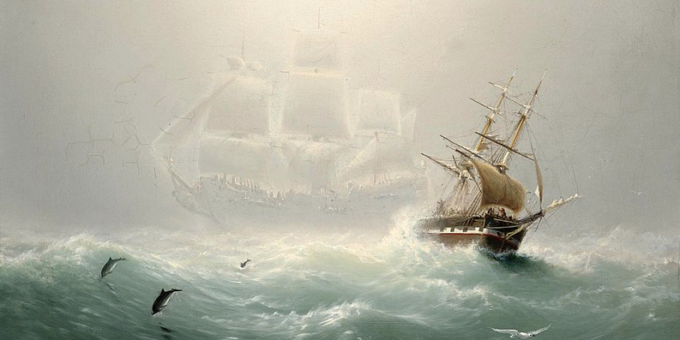
The Flying Dutchman is one of the most well known ghost ships of the seas. Also known as the phantom ship of Van der Decken, the story of this ghostly ship is believed to have originated during the 17th century.
The Flying Dutchman began its spectral days haunting the seas around the Cape of Good Hope, but the ship is no longer bound to one location. Among the superstitious, seeing the ship was a bad omen. Men believed that the sight of the Flying Dutchman brought about squalls, shipwrecks, death, and could make everyone on board sick.
1. The English Version
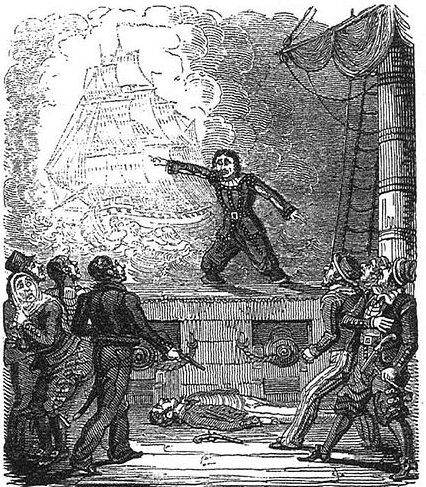
The most common version of the legend of the Flying Dutchman tells us that it was a Dutch ship commanded by a man named Captain Van der Decken (also spelled Vanderdecken). As the captain was taking his ship around the Cape of Good Hope, he found himself in the midst of a brutal storm. The winds were impassable and his crew pleaded with him, asking to turn the ship around and wait until the storm passed, but the captain refused. Just then, a ghost (or God, by some accounts) appeared on the masthead. The figure warned the captain to turn around and wait for the storm to die down.
Being a stubborn man, the captain raised his fist and swore that he would make it around the cape, even if it took him until Judgement Day to do so. With that, the ship went into the storm and has forever been stuck fighting against the winds in an effort to make it around the cape. [1]
2. Plague Ship
There was also a second origin legend. In this story, the crew had committed piracy and there was a murder on board the ship. As a form of divine punishment, plague broke out among the men.
The men, in a panic and desperate for medical attention, tried to make port. No one would allow them to dock because they did not want the plague to spread. As a result, the ship was condemned to forever sail the open waters in order find a place that would allow the ship into port.
Sadly, plague infested ships were a common problem in the past and it was the rule, rather than the exception, to not allow these ships to make port. The Black Death plague was a serious epidemic during the seventeenth century and ships would undergo forty day quarantines to ascertain whether or not the plague was on board. [2]
3. A Flying Ship?
One of the oddest reports about the Flying Dutchman was that it appeared to actually be floating above the water. According to science, this type of mirage is called a Fata Morgana.
Generally seen on the open water, but also sometimes seen on land, this type of mirage makes a ship appear as though it is floating on top of the water. This is a natural phenomenon and happens when cold air at the surface of the water is topped by warm air from above. As sunlight passes through the layers of warm and cold air, the light is bent and gives the illusion that the boat is floating in the air.
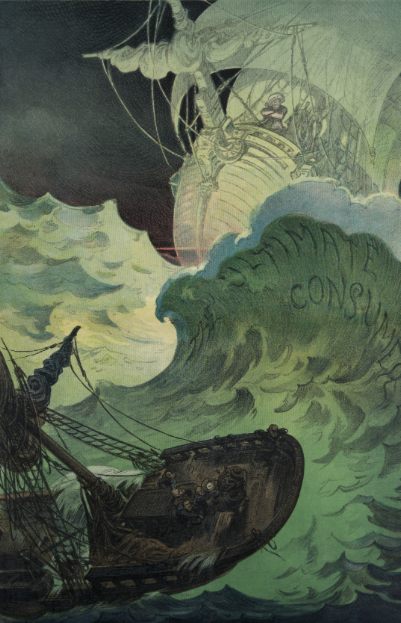
Of course, our ancestors did not know the science behind the mirage. In an effort to make sense of what they were seeing, they labelled any distant ship or object that appeared to be floating a “flying phantom” from the spirit world, or Hell. Seeing anything floating above the water was an evil omen and an almost certain sign that death or disaster was on its way. [3]
4. Sightings in 1823 and 1835
While most early sightings of the Flying Dutchman were shared by word of mouth, sightings in the 1800s were written in the log books by eyewitnesses.
Captain Owen of the HMS Leven wrote in his log book that he sighted the Flying Dutchman twice in 1823. Seeing the phantom ship the first time must have been frightening, but on the second sighting Captain Owen wrote that the ghost ship seemed to have lowered a boat into the water. Captain Owen was under the impression that the Flying Dutchman was attempting to make contact with his ship, and this must have been terrifying.
In 1835 the Flying Dutchman was spotted once again. This time an entire British crew claimed to have seen the ghost ship approach them during a storm. The Flying Dutchman came very close to their ship and the men panicked as they thought they would certainly crash. But, just as suddenly as the ghost ship had appeared, it disappeared into the mist. [4]
5. Death of Witnesses
King George V claimed to have seen the Flying Dutchman when he was a teenager in 1881. While on a three year voyage on the HMS Bacchante, he wrote in his journal on July 11th:
“At 4 a.m. the Flying Dutchman crossed our bows. A strange red light as of a phantom ship all aglow… where also the officer of the watch from the bridge clearly saw her, as did the quarterdeck midshipman… Thirteen persons altogether saw her.”
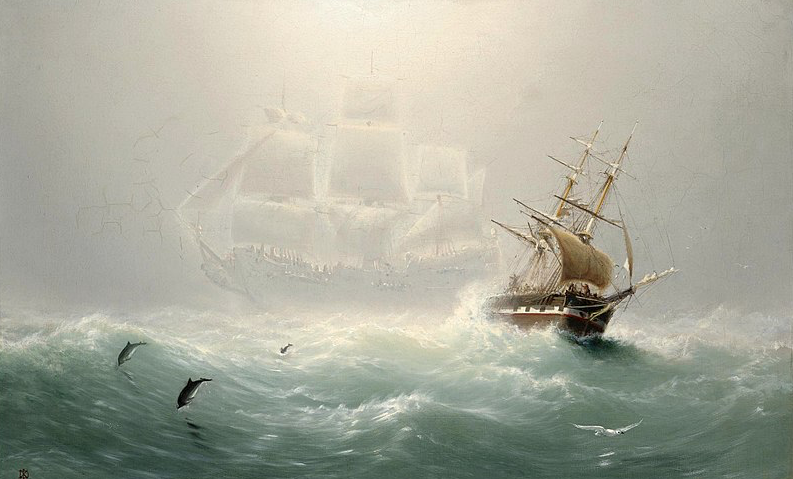
Later that same day, at 10:45 p.m., one of the men who had seen the Flying Dutchman fell to his death, thus giving some validity to the curse of the phantom ship.
However, this was not the first time people died after witnessing the ghost ship and it certainly was not the last.
In 1884 an American tea clipper named Relentless saw the phantom ship. The ship’s helmsman died when they came closer to the ghost ship and, later that evening, the captain wrote that he lost three more men when they were washed overboard. [5] [6]
6. Sighted During Both World Wars
It would be easy to assume that phantom ship sightings died down by the twentieth century, but they did not. In fact, there were numerous sightings of the Flying Dutchman during World Wars I and II.
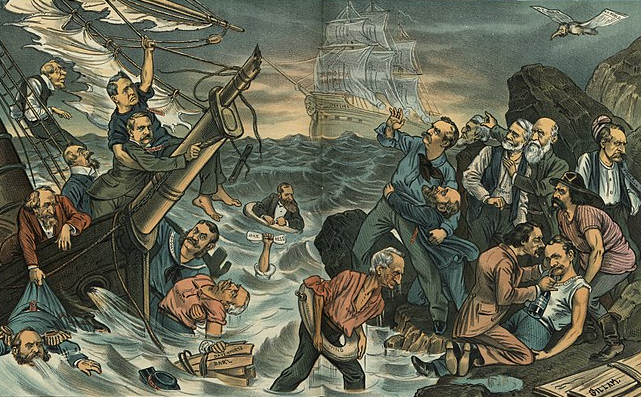
One strange sighting happened in January of 1911. The Orkney Belle. a whaling steamer, spotted the Flying Dutchman and watched her sails fill out with wind even though no breeze could be felt. As the ships passed each other, the Orkney Belle’s crew were able to read the phantom ship’s name on the stern and heard three bells ring out from it. Then it vanished.
A few years later, in 1914, the Orkney Belle was one of Britain’s first ships to be sunk by the Germans at the start of World War I.
In 1942, the crew on the HMS Jubilee saw a ghost ship with sails full of wind go by. The second officer, Davies, noted in the log that the ship was unidentifiable and that there was no wind to be felt. The Jubilee’s third officer, Nicholas Monsarrat, attempted to signal the phantom ship but received no response.
This incident later inspired Monsarrat to write the novel “The Master Mariner.” [7]
7. Not the First Condemned to Sea
The crew of the Flying Dutchman were not the first to be condemned to wander the seas. In Homer’s The Odyssey, Odysseus blinded the one-eyed son of Poseidon. Instead of being drowned, as was often Poseidon’s way of punishing mortals, Odysseus was forced to roam the seas for ten years before he was allowed to return home.
There is also the ancient German legend about Herr von Falkenberg. According to one version of the story, Herr von Falkenberg became jealous of his brother and murdered him. As punishment for his crime, he was forced to board a ghostly ship. On this ship there was a figure dressed in black and a figure all in white. As the ship sailed, the two figures began playing a game of dice for Falkenberg’s soul. This game would go on until Judgement Day when Falkenberg would finally learn who would claim him. [8] [9]
8. Modern Flying Dutchman
It was November 10, 1942. A Douglas C-47 Skytrain, nicknamed “Flying Dutchman” by its Dutch captain George Vandervoort, was flying over the Owen Stanley Range in Papua New Guinea when a heavy downdraft crashed the plane into the side of Mount Obree, also known as Ghost Mountain.
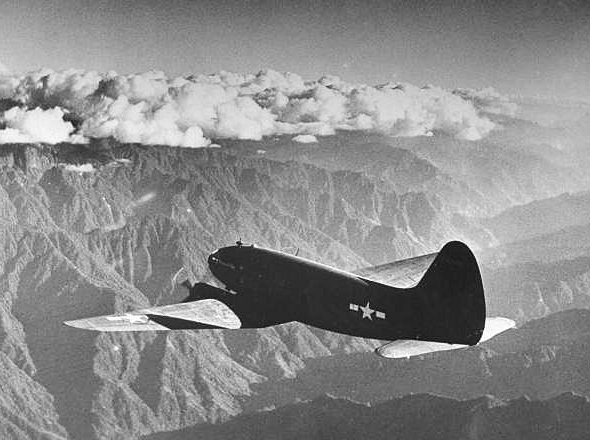
There were 23 men on board, and seven of these men died in the crash. Of the remaining 16 survivors, eight were badly injured. Two days later, on November 12, four of the survivors left the crash to get help. After another three days, the remaining four uninjured men left the injured to get help. After over 30 days and numerous hardships experienced by both parties, six men survived the journey to find help.
A search party was launched and after eight days of searching, they had to give up.
It wasn’t until July 1944 that the crash site was discovered and a rescue party found that all eight of the injured men had perished during the long wait.
According to the natives, the ill-named Flying Dutchman’s engine could be heard roaring overhead at night. The plane had became a ghost ship, and according to the local legend it was destined to attempt its impossible landing night after night. [10] [11]

